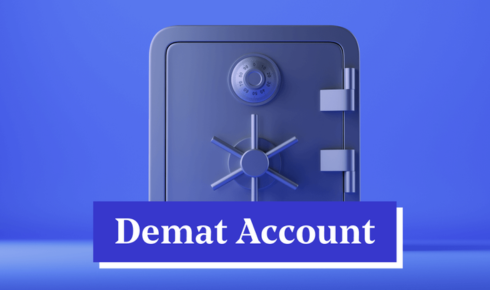The Demat Account or Dematerialized Account is mandatory for all individuals wanting to trade, buy, or sell securities in electronic form in India. Quite an essential tool that acts as a digital vault for all shares, bonds, units of mutual funds, et cetera. Share investors were required to physically keep their share certificates, but with the Demat Account, all this has become much easier, and the accounts have replaced stamp papers. Online account opening facilities for Demat Accounts, with no opening cost provided separately from some brokers and financial institutions, have been used for quite some time.
Understanding of a Demat Account:
A Demat Account is a facility that investors use for holding securities in electronic form, other than holding physical certificates. It is a must for trading and buying securities, as all the trades are done through the electronic mode with the help of depositories in India, namely, the National Securities Depository Limited (NSDL) and the Central Depository Services Limited (CDSL).
When the Demat Account is linked to the trading account, the Demat Account keeps an electronic record of all transactions with respect to the trading account. This arrangement gives the Depository Participant no power to operate the trading account.
Why Free Demat Accounts?
Free accounts are provided when the investor is not paying any account opening fees. Reducing the initial burden! However, AMC and brokerage charges will still be imposed by the brokerages.
Guide to Open Your Free Demat Account
Here is a well-structured guide on setting up a Free Demat Account, step by step:
Step 1: Choose Depository Participant (DP)
A Depository Participant (DP) acts as a middleman between the investor and the depository, like NSDL or CDSL. Banks, brokerage firms, and other financial service providers generally act as DPs. An investor must choose the DP that highly suits them.
Step 2: Fill Out the Application Form
The application form for opening a Demat Account can either be filled out on the DP’s website or at their branch. It requires the mention of the following details:
Name, date of birth, and contact details
PAN card number
Aadhaar number
Bank account details
Step 3: Submit Required Documents
The following documents are mandatory to open a Demat Account-
PAN Card (Compulsory for all investors)
Proof of Identity: Aadhaar card, passport, or voter ID
Proof of Address: Aadhaar card, utility bill, or passport
Bank Details: Canceled cheque or bank statement
Photograph: Recent passport-size photo
Step 4: Complete Verification
Verification will be in line with Know Your Customer (KYC) regulations. Most brokers conduct in-person verification (IPV) either through video call or by personally visiting the applicant. During the process, original documents will be verified for authentication.
Step 5: Account Activation
After successful document verification, the DP will activate the new Demat Account. If it is a Free Demat Account, the broker will make no opening charges. The tried and qualified verification procedure will lead to the account activation, where the investor will receive their login credentials for logging in through a trading platform/app.
Linking Your Demat Account with Trading and Bank Accounts
The moment the account is active, an immediate linkage is to be established with the trading account and the bank account.
Trading Account: This account is to be used for placing buy or sell orders on the stock exchange.
Bank Account: Money that you earn or lose from the settlement of trades will be credited or debited through the bank account.
Demat Account: Purchased securities sit there but are debited during sale transactions.
Any hindrance in the cash flow procedure between these three accounts will disrupt the smooth running of investment trading.
Making Use of Your Demat Account
Upon successful account establishment, the account can be put to use using the following:
Buy and Hold
Securities that are bought through the exchange will be electronically deposited in the Demat Account.
Sell Securities
Selling means deductions from the Demat Account followed by fund credits pieced into the bank account linked.
Corporate Actions
Dividends, rights, and bonuses are automatically credited.
Tracking Investments
In the trading platform, the investor can check, monitor, and assess holding values and transactions.
Additional service charges, after availing a Free Demat Account, are worth considering:
Even if an investor has successfully opened a Free Demat Account, some inputs need to be kept in check with associated charges in the future:
Annual Maintenance Charges (AMC): Will be levied annually by the chosen DP.
Transaction Charges: Would be charged against the credit or debit of securities.
Brokerage Fees: Besides the trade executed through the trading account, brokerage fees will also be incurred.
Regulatory Charges: Securities Transaction Charges (STT), GST, SEBI fees, and all such charges.
Regulatory Structure Admirable to Demat Accounts
The Depositories: NSDL and CDSL constitute the two central depositories in India.
SEBI Regulations: Securities and Exchange Board of India (SEBI) lays down the rules and provisions governing Demat Accounts.
Investor Protection: Investors get a copy of the contract notes and account statements for keeping tabs on their dealings and transactions.
Important Points to Be Considered
A PAN card is mandatory for opening a Demat Account.
Free Demat Accounts carry no account opening charges but might include AMC or transaction charges.
KYC verification is a prerequisite.
Linking a Demat Account with a trading account and bank account brings in complete compliance.
Conclusion
Having beneficial application accounts, the Demat Account is the first step in trading in the market scenario in India. Henceforth, the process for opening or closing accounts today remains purely titular; often, a good part of the openings are available for free by virtue of the Free Demat Account. With practically negligible account opening charges, one can even open multiple accounts. Through this Guide to Open Your Free Demat Account, you must channel easy manual settings through a Depository Participant, followed by filling up an application, filing documents, verifying the accounts, and finally activating the account. This account allows seamless electronic holding, buying, and selling of securities and facilitates compliance.





















